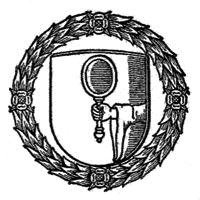 This month, Sarah Spence spoke with Medieval Academy News about her vision for Speculum.
This month, Sarah Spence spoke with Medieval Academy News about her vision for Speculum.
********************************
Just to be sure the word is out, let me run the risk of repeating it: the backlog at Speculum is gone–only a manageable number of accepted pieces remain in the queue–and the turnaround time has decreased dramatically to an average of 60 days. Submissions had slipped when response was slow (and time to publication even slower) and it is a challenge for a journal to shake that kind of reputation and insist that this is not just a temporary change. The best approach, I think, is to talk less about numbers and more about content and vision, while continuing to demonstrate that we have grown more efficient as a publication.
We can now lift our heads and look around, take stock of where we are and see where we’d like to be going. I think it’s fair to say that what Speculum does right it does very right: often described as the journal of record, Speculum has remained a beautiful, exact, and exacting publication. It should be the place for that article you return to repeatedly–for teaching and for research–the place where the last word on a question might be found. But it could also be the place of the dernier cri, where the latest questions are being broached and tested–perhaps in formats that change with the issues. The growing world of digital communication has made us more comfortable with the process of discovery, and Speculum, with its dual status as both print and online publication, is well positioned to take advantage of that. The editorial board has recently approved pursuing a special digital supplement–a one-time, online only, fifth issue–that would showcase digital resources available to medievalists. Pushing the boundaries is good for content, too: while Speculum is “open to contributions in all fields studying the Middle Ages, a period ranging from approximately 500 to 1500,” to my mind that entails, or could justifiably entail, approaching the period in the context of what precedes and follows it. I found myself explaining this at Kalamazoo in terms of vectors: where did the elements of this medieval world originate? Where did they land? What did they carry with them, those vectors of culture that, in entering and leaving, we identify as medieval? If we see the Middle Ages as a vital and vibrant period, we will admit that it did not surface, Athena-like, from the head of antiquity, but, rather, emerged–as it devolved–slowly, even organically. I would like to see us pursue that approach in space as well as in time, looking across the borders of language, religion, nation, gender to understand better where the Middle Ages fit into the bigger cultural picture. And within the borders there are plenty of questions still to ask: about the nature and function of history, of literature, of art, about the quality and source of our data, be they archival or archaeological. There is no better way to display the interdisciplinarity that we expect in a Speculum article than by questioning the lines drawn between disciplines. My wish, finally, is that Speculum continue to publish rigorous research on the Middle Ages, as it has always done, and that it will do so by seeing and setting those years in the broadest possible cultural landscape.
My vision for the print journal has itself evolved over the last few months. I was sure that one major change I wanted to make right away was to make the book reviews online only, following the model of the Bryn Mawr Classical Review. I was also pretty confident that the print journal would soon give way to digital. Now I’m not so sure. I have been told repeatedly that people especially like having the reviews in print because they like to sit down and read through them, learning about projects that are perhaps tangential to their own. Many readers-seemingly a large percentage of our membership-prefer the print version of Speculum. The choice of a four-color cover was aimed at celebrating that version: the glow of the colors, greater fidelity to the original object, and even the feel of the cover stock are all aspects of the print version that are absent or different from the online one.
For the foreseeable future, then, Speculum will showcase the results of research into the Middle Ages through a variety of media and means. We look forward especially to receiving submissions that illuminate the period by testing its boundaries, one way or another. And we commit to keeping the journal on a schedule that makes it a viable place for scholars of all ranks and disciplines to publish.
–Sarah Spence (sspence@themedievalacademy.org)



